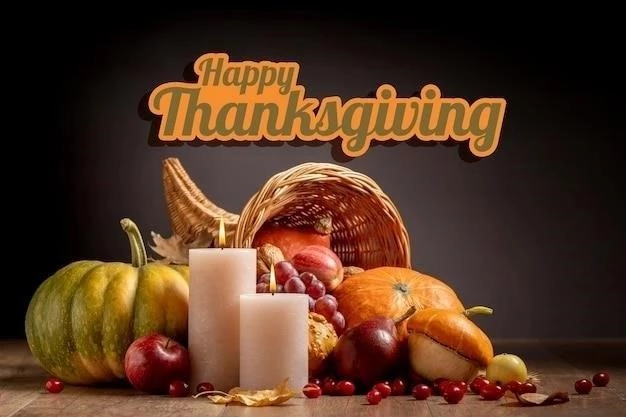The Macy’s Thanksgiving Day Parade: A Thanksgiving Tradition
The Macy’s Thanksgiving Day Parade stands as a cherished American spectacle, a vibrant tapestry of towering balloons, elaborate floats, and spirited performances. Since its inception in 1924, this annual tradition has woven itself into the fabric of Thanksgiving, captivating millions nationwide and signaling the arrival of the holiday season.
Origins and Early Years
The Macy’s Thanksgiving Day Parade, an event synonymous with the Thanksgiving holiday, emerged from humble beginnings. In 1924, the inaugural parade, then known as the “Macy’s Christmas Parade,” took place, orchestrated by immigrant employees of Macy’s department store. These first-generation Americans, eager to celebrate their newfound home and share their heritage with fellow citizens, drew inspiration from European holiday festivals.
The procession commenced a few blocks north of the iconic Herald Square flagship store, featuring a delightful assortment of attractions. Live animals borrowed from the Central Park Zoo, including elephants, lions, and bears, captivated onlookers, while professional bands and Macy’s employees adorned in vibrant costumes added to the festive atmosphere. At the parade’s culmination, Santa Claus himself made a grand entrance at Herald Square, officially marking the commencement of the Christmas shopping season.
Public reception to the event was overwhelmingly positive, prompting Macy’s to establish it as an annual tradition. The parade’s popularity surged in subsequent years, evolving into a beloved hallmark of the Thanksgiving holiday. This shift from a Christmas-themed event to one synonymous with Thanksgiving reflected the parade’s growing national appeal and its role in uniting Americans in shared celebration.
The Impact of World War II
The outbreak of World War II in 1939 cast a long shadow over the Macy’s Thanksgiving Day Parade, as it did with many aspects of American life. With the United States’ entry into the war in 1941, the nation’s resources, including rubber and helium, were diverted to support the war effort. These materials, essential for the creation and inflation of the parade’s iconic balloons, became scarce.
Recognizing the wartime constraints and the need to prioritize national interests, Macy’s made the difficult decision to suspend the parade from 1942 to 1944. The iconic balloons, symbols of joy and celebration, were deflated, and the 650 pounds of rubber they contained were donated to the U.S. government. This gesture underscored the shared sacrifice and collective spirit that defined the American home front during the war years.
The parade’s absence left a void in the hearts of many, underscoring its significance as a cherished tradition and a symbol of national unity. However, the spirit of the parade endured, and its return in 1945 was met with immense joy and relief. The revival of the Macy’s Thanksgiving Day Parade signified a return to normalcy and a celebration of peace, marking the beginning of a new era for the beloved tradition.

The Evolution of Balloons and Floats
The Macy’s Thanksgiving Day Parade’s spectacle has been continuously redefined by the evolution of its balloons and floats, reflecting technological advancements and cultural shifts. The parade’s early years featured simple, characterless balloons, primarily used for advertising purposes. However, in 1927, a pivotal shift occurred with the introduction of Felix the Cat, the first-ever character balloon. This innovation, the brainchild of puppeteer Tony Sarg, marked a turning point, capturing the public’s imagination and setting the stage for the parade’s signature element.
Over the decades, balloon design and construction techniques advanced considerably. Early balloons, crafted from rubberized silk and inflated with air, were later replaced with helium-filled neoprene and polyurethane creations, allowing for increased size and intricate designs. This evolution gave rise to iconic characters such as Mickey Mouse, Snoopy, and Kermit the Frog, transforming the parade into a whimsical procession of larger-than-life figures.
Floats, initially simple platforms adorned with holiday decorations, underwent a similar transformation. They evolved into elaborate, multi-tiered stages featuring intricate sets, animatronics, and celebrity performers. These mobile theatrical productions, often reflecting contemporary themes and Broadway productions, further cemented the parade’s reputation as a showcase of creativity and spectacle.
From Animal Cages to Giant Inflatables
The Macy’s Thanksgiving Day Parade’s earliest years bore witness to a captivating spectacle: live animals on parade. Borrowed from the Central Park Zoo, creatures great and small, including elephants, camels, bears, and monkeys, marched amidst the throngs of delighted spectators. Housed in ornate cages and accompanied by their keepers, these animals added an element of the exotic and the wild to the festivities, reflecting a bygone era’s fascination with showcasing the wonders of the natural world.

However, as animal welfare concerns gained prominence and the parade’s focus shifted towards whimsical entertainment, live animals were gradually phased out. The year 1927 marked a turning point, with the debut of Felix the Cat, the parade’s inaugural character balloon. This innovative creation, towering over the crowds and capturing the imagination, heralded a new era for the parade.
The transition from live animals to giant inflatables marked a significant shift in the parade’s identity, moving away from showcasing captive animals towards a celebration of fantasy and character-driven storytelling. The giant balloons, with their whimsical designs and ability to enchant onlookers of all ages, quickly became synonymous with the parade, establishing a legacy that continues to captivate audiences to this day.
Technological Advancements in Float Design
The Macy’s Thanksgiving Day Parade’s floats have undergone a remarkable transformation, evolving from simple platforms into intricate, technologically advanced marvels. This evolution, driven by creative ingenuity and engineering prowess, has continuously redefined the parade’s spectacle, captivating generations of spectators.
Early floats, often featuring basic wooden structures adorned with festive decorations, served as moving stages for performers. However, as the parade grew in scale and ambition, float design embraced technological innovations. The introduction of hydraulics and animatronics brought floats to life, enabling dynamic movements and intricate character interactions.
Today, state-of-the-art floats employ sophisticated technologies, including computer-controlled animation, LED lighting systems, and high-fidelity sound systems. These advancements have transformed floats into immersive theatrical experiences, showcasing intricate sets, lifelike characters, and captivating performances that seamlessly blend artistry and technology.
The Parade’s Broadcast Mediums
The Macy’s Thanksgiving Day Parade’s journey to becoming a national spectacle is intertwined with the evolution of broadcast media. From its early radio broadcasts to its current reign on television, the parade’s reach has expanded exponentially, transforming it into a shared cultural experience for millions across the United States.

The parade’s first foray into the world of broadcasting occurred in 1932, when local radio stations aired live coverage, bringing the sounds of the marching bands and the excitement of the crowds to listeners at home. This marked a pivotal moment, extending the parade’s reach beyond the streets of New York City and into the homes of Americans nationwide.
The advent of television in the late 1940s ushered in a new era for the parade. In 1948, NBC broadcast the event for the first time, bringing the spectacle of the giant balloons, marching bands, and elaborate floats into American living rooms. This landmark broadcast marked the beginning of a long-standing partnership between the parade and television, solidifying its status as a Thanksgiving Day tradition for families across the country.
Radio Broadcasts and the Growth of an Audience
The year 1932 marked a turning point for the Macy’s Thanksgiving Day Parade, as it embarked on a new era of auditory spectacle: radio broadcasting. This groundbreaking move, spearheaded by local New York City radio stations, brought the parade’s vibrant soundscape directly into homes across the region. No longer confined to the bustling streets of Manhattan, the parade’s reach extended to a wider audience, capturing the imaginations of those unable to attend in person.
The crackle of static gave way to the booming sounds of marching bands, their intricate melodies filling living rooms as families gathered for Thanksgiving. The excited chatter of the crowds, punctuated by the oohs and aahs as giant balloons glided by, painted a vivid auditory picture of the parade’s magic.
This newfound accessibility through radio broadcasts proved instrumental in fostering a broader sense of community and shared experience surrounding the parade. It transcended geographical boundaries, uniting listeners near and far in a celebration of Thanksgiving traditions and the sheer joy of the spectacle. This marked the beginning of the parade’s transformation into a national phenomenon, laying the groundwork for its eventual dominance on television screens.
The Transition to Television and National Recognition
The arrival of television in American households during the late 1940s ushered in a transformative era for the Macy’s Thanksgiving Day Parade, propelling it to unprecedented levels of national recognition and cementing its status as a cherished holiday tradition. In 1948, NBC took on the mantle of broadcasting the parade, bringing the spectacle directly into living rooms across the country. This landmark telecast marked a turning point, capturing the parade’s visual grandeur and vibrant energy like never before.
The black-and-white images of towering balloons gracefully navigating the city streets, the intricate details of the floats, and the synchronized movements of marching bands captivated viewers of all ages. The magic of the parade, once confined to those physically present on the streets of New York City, was now accessible to a vast and geographically diverse audience.

This newfound accessibility through television transformed the parade into a shared national experience, uniting families across the country in a celebration of Thanksgiving and the wonder of the spectacle. It became an integral part of the holiday tradition, forging lasting memories for generations of Americans.
Memorable Moments and Performances
The Macy’s Thanksgiving Day Parade’s rich history is replete with memorable moments and iconic performances, etched into the collective memory of generations of spectators. From spectacular balloon mishaps to show-stopping musical numbers, these unscripted occurrences and meticulously planned acts have contributed to the parade’s enduring legacy, transforming it into a cultural touchstone.
One such unforgettable incident unfolded in 1997, when a wind gust sent the Cat in the Hat balloon veering off course, colliding with a lamppost and injuring several bystanders. This unforeseen event, a stark reminder of the challenges of maneuvering giant inflatables amidst the city’s skyscrapers, prompted a reassessment of safety protocols and led to the implementation of new regulations.
On a lighter note, the parade has witnessed countless heartwarming performances by renowned musicians, Broadway casts, and beloved characters. From Kermit the Frog’s debut in 1977, captivating audiences with his signature wit, to Mariah Carey’s soaring vocals filling Herald Square, these performances have added an extra layer of magic to the parade, creating enduring memories for spectators of all ages.
The Macy’s Parade Today: A Global Spectacle
The Macy’s Thanksgiving Day Parade, once a local celebration conceived by immigrant employees, has transcended its humble origins to become a global spectacle, captivating audiences far beyond the streets of New York City. Its iconic imagery, broadcast internationally through television and digital platforms, has become synonymous with Thanksgiving, capturing the imagination of millions worldwide.
The parade’s global reach extends beyond mere viewership; its influence can be seen in the numerous similar events it has inspired across the globe. From Canada to Japan, countries have adopted the concept of a grand procession featuring larger-than-life inflatables and festive entertainment, adapting the format to reflect local customs and traditions.
This global fascination with the Macy’s Thanksgiving Day Parade speaks to its universal appeal, its ability to evoke a sense of wonder and shared celebration that transcends cultural boundaries. As the parade continues to evolve, embracing new technologies and innovative designs, it solidifies its status as a cherished tradition, not only in the United States but as a symbol of global festivity and shared joy.
The Cultural Impact and Legacy of the Parade
The Macy’s Thanksgiving Day Parade has indelibly imprinted itself on American culture, evolving from a festive spectacle into a cherished tradition and a powerful symbol of national unity. Its enduring legacy rests not only on its visual grandeur but also on its ability to evoke a shared sense of joy, nostalgia, and anticipation for the holiday season.
For many Americans, the parade serves as a touchstone of childhood memories, its iconic balloons and festive performances inextricably linked to Thanksgiving gatherings and family traditions. The anticipation of catching a glimpse of Snoopy soaring through the sky or a beloved character coming to life on a float creates a sense of wonder that transcends generations.
Beyond its entertainment value, the parade has come to embody the spirit of Thanksgiving, reminding us of the importance of gratitude, community, and togetherness. As the parade winds its way through the heart of New York City, it brings together people from all walks of life, fostering a sense of shared experience and collective joy. This enduring legacy, passed down through generations, ensures that the Macy’s Thanksgiving Day Parade will continue to captivate and inspire for years to come.










